1.
Cactus
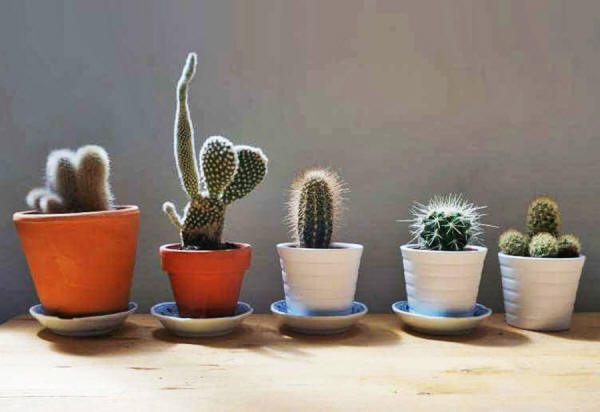
Cactus is well known as an
efficient absorber of radioactive waves thanks to an
in-depth study done by NASA.
It is especially useful for absorbing the radiation that is
produced by computers, making it an excellent plant for any
office, whether at work or in your home.
It also absorbs the radiation that may be coming from nearby
cell phone towers, so it is truly a plant that protects you from
a wide range of radioactive activity.
Part of what makes cactus such a wonderful plant is that it is
so easy to maintain. Cacti do not need to be watered every day –
just when the soil gets dry.
They grow well with a lot of light in a warm spot, but if you
are in a cold climate you can keep them indoors near a window,
and they will do just fine.
This is preferable,
of course, because they need to be kept in a straight line from
your computer if you want them to most effectively absorb the
harmful radioactive waves that it emits.
Cacti are unique-looking plants that can add a comfortable,
southwestern ambiance to any room.
Because there are
over 2,000 species of cacti, you can mix and match different
designs, colors, shapes, and sizes to put together a real work
of art and keep your home pretty and fresh.
They are slow growers and should live for a long time provided
that you take the minimum effort required to keep them growing
healthily.
2. Snake Plant
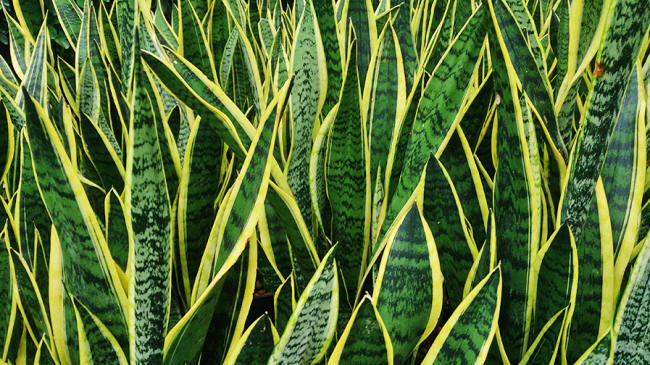
The
Snake Plant, also known as
'Mother-in-Law's tongue,' is another plant that is
very effective when it comes to absorbing computer radiation.
Placing it near your computer or close to other major sources of
radiation can be a great way to keep your room healthy.
It also does a fantastic job of converting CO2 into
oxygen, so you will benefit from cleaner air and clearer,
stronger lungs!
The snake plant's long, thin appearance makes for a great
addition to any room. It is very versatile and can be grown in
the ground or in a variety of pots, no matter what the material.
Like the cactus, a snake plant does not require constant
watering. You just need to check the soil about once a week to
make sure that it hasn't dried out.
Then, simply water it until it is fully moist, but be careful
not to drown it, especially in the winter months. Make sure not
to get the leaves wet when you are watering the plant, as this
can lead to decay or a variety of other issues.
The snake plant does best in indirect light, so the ideal spot
for it is away from a window in a room that gets several hours
of a light a day.
Whether you have it near your TV, computer, or any other
electronic device, you will be benefiting from its ability to
absorb a large amount of radiation, protecting both you and your
family from the harmful effects of electromagnetic waves.
3. Spider Plant
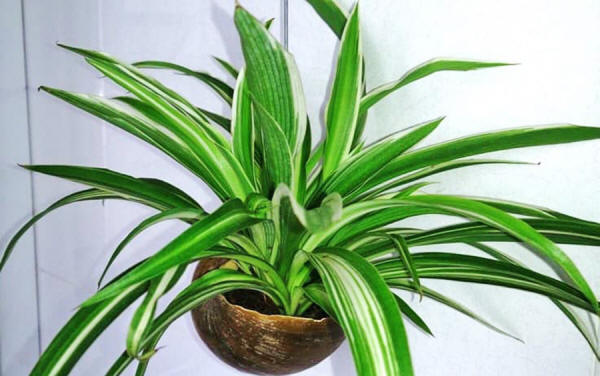
The
spider plant is similar in
appearance to the snake plant, but the leaves are limp instead
of rigid and tend to flow out over the side of the vessel rather
than point straight up.
The spider plant is a succulent that not only absorbs
pollution and cleans your home of harmful gases but is also
very useful in absorbing radiation from your electronic
devices.
The spider plant is another one that requires very little
maintenance. Like the snake plant, it grows best in indirect
light, making it the perfect indoor plant.
Too much sunlight or heat will cause the leaves to burn, to make
sure to keep the plant in an area that receives plenty of shade,
or to move it away from the window after several hours of
sunlight exposure.
These plants do best
in temperatures between 55 and 80 degrees Fahrenheit. (13ºC and
27ºC.)
Spider plants can be self-sustaining, as they will produce
flowers that may cause a new spider plant to form! Once this new
plant reaches 2 inches, you should replant it in another pot.
Now you have a second spider plant that you can put anywhere,
and you didn't even need to go to the store to buy it!
This is one of the most economical ways to protect yourself and
your family from the harmful EMF waves that can be found
throughout your home, especially in areas with electronic
devices.
4. Betel Leaf
Plant
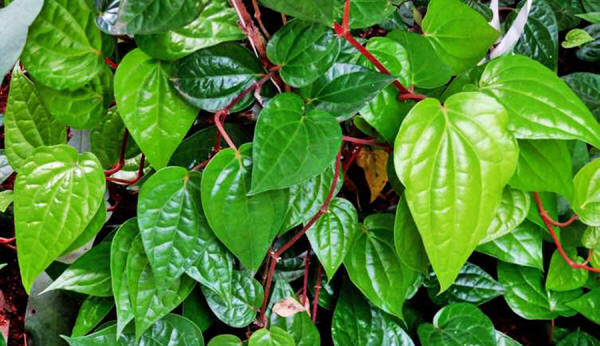
The
betel leaf plant is a beautiful
and simple accent plant for any room. On top of its great looks,
it has a strong ability to absorb electromagnetic waves.
Because it has hydroxyl and superoxide scavenging properties, it
can be used to eliminate these radioactive components from the
air.
In addition to this, it absorbs harmful gases, meaning that the
air in your home or office will be clean and clear, letting you
breathe more easily.
The betel leaf plant is versatile and can be grown in a garden,
on a balcony, or in a container inside your home.
If you want to take full advantage of its radio-protective
properties, you'll want to keep it inside near your
devices that emit the most radiation.
Radiation travels in a straight line, so keep that in mind when
setting up your plant, and make sure not to block the path with
other items.
The betel leaf plant is slightly more difficult to maintain, as
it requires regular watering. You should check the soil every
day.
If it is dried out, water it fully and check again in a few
minutes to make sure it doesn't all get absorbed. You want the
soil to maintain a consistent level of moisture.
Keep the plant in partial shade to minimize the risk of burning
the leaves. If your room is sunny, simply move it to a corner
that is far away from the window and receives less sunlight.
5.
Stone Lotus Flower
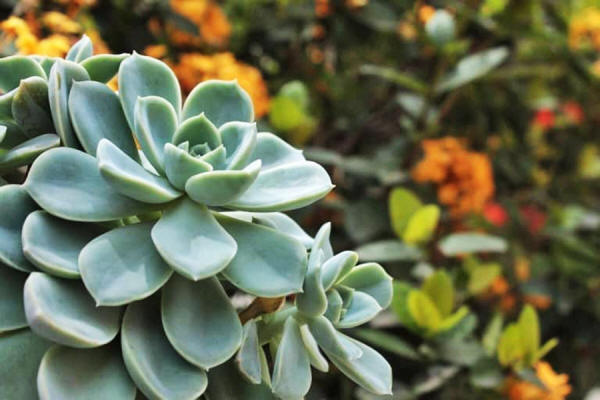
The stone lotus flower is a succulent that is similar in
appearance to a cactus but is slightly different biologically.
It is great at absorbing radiation and considering its
size, it is one of the most efficient plants at doing so. These
unique succulents are small and can be kept on your desk right
next to your computer, making for a great functional decoration.
You'll be able to look at something pretty and know that it is
protecting you from the harmful waves coming out of your
electronic devices!
Like most succulents, the stone lotus is relatively easy to care
for. It requires very little light and even less water, so it
should be able to survive no matter where you put it as long as
there is a minimal amount of sun every day.
Because it can be planted in stones, it is great at holding onto
water, so you only need to water it every 2 or 3 days. Just
check to make sure there is a little bit of moisture, and if
there isn't, give it a little bit of water.
Stone Lotus plants are relatively affordable, so you can get a
bunch of them to put around your house for a cohesive, matching
look. They really pack a punch for their size and will help
absorb radiation throughout your home.
Because they are relatively compact, you can place them on
almost any surface without them taking over or becoming
intrusive.
6.
Aloe Vera
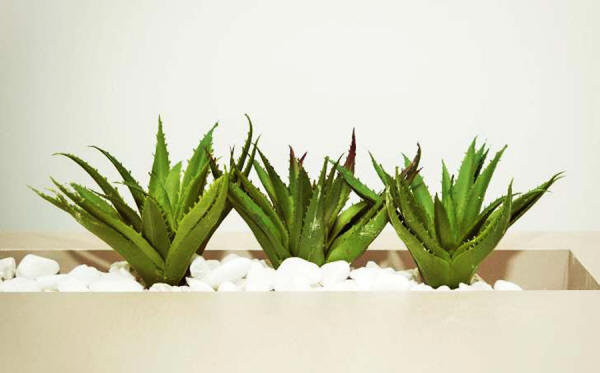
Aloe Vera has long been used
for its many medicinal purposes, but it is also capable of
absorbing high levels of radiation.
Like many other healthy plants, the Aloe Vera plant also cleans
your air thoroughly, absorbing carbon dioxide and converting it
into oxygen.
It is a nice-looking plant that is easy to grow, so you can
harvest it and use it for its many other properties while new
plants continue to bud.
Aloe Vera should be planted in a wide container using a
high-quality potting mix similar to what you would use for other
succulents.
This container should have sufficient drainage, as too much
water can lead to rot or wilted leaves, which could ultimately
result in a dead plant.
These plants do best in indirect sunlight, so be sure to keep
them far enough away from the window to get several hours of
shade every day, especially if you live in a hot climate.
Because of its radio-protective properties, you should place
your Aloe Vera plant in a straight line from the electronic
device that is emitting radiation.
Make sure not place anything between the two, as this will
diminish the ability of the plant to absorb radiation.
Having several Aloe Vera plants throughout the house is an
excellent way to protect yourself from radiation and keep your
air clean and fresh.
7. Ivy

Ivy is one of the best
absorbers of radiation available. It can absorb up to
90% of benzene in the air within 24 hours.
This means that it is extremely effective and works fast so that
you can start benefiting as soon as you purchase and place this
beautiful plant.
It is also known to clean and greatly improve the quality of
your air, eliminating substances such as carbon dioxide, carbon
monoxide, and formaldehyde.
Ivy can be planted indoors or outdoors, but if you want to take
advantage of its ability to block and eliminate radiation, it is
best to use it inside the home.
It is easy to grow inside as long you have a room that can
provide the plant with plenty of bright light. If you have large
windows in the south-facing portion of your home, this is the
ideal spot to put the plant.
Make sure not to overwater your ivy, as it does best in semi-dry
conditions. Check to see that the soil is dry on the top before
you water the plant again.
You should also plant your ivy in a vessel that has plenty of
drainages, as it will begin to wilt if it sits in standing water
for too long.
If you notice that the water isn't draining, dump the excess
water and try to find a better container for the ivy.
8.
Asparagus Fern
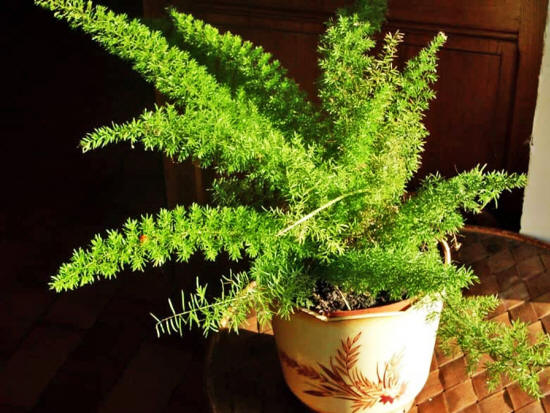
Asparagus fern has a wonderful
fragrance and is highly effective when it comes to absorbing
radiation.
It has well-known antioxidant properties that help to defend
against damage that may be caused by exposure to gamma
radiation.
It is also a strong plant for absorbing electromagnetic
waves that may come from your computer, television, or other
electronic devices in your home.
Another easy plant to care for, the asparagus fern makes for a
great indoor decorative item as well as a functional,
radiation-absorbing plant.
The spurs can be slightly thorny, however, so make sure to wear
gloves when performing maintenance and to keep it away from
where children or pets may be able to access it.
You will want to keep your fern in a warm, humid area. If you
are in a cool, dry climate, this can be done by having a
humidifier in a room near the plant.
The asparagus fern loves water, so always keep it hydrated and
water it every day. It is best grown in a pot, and you should
fertilize it several times a year to give it the nutrients that
it needs to survive.
This plant may require a bit more maintenance, but it is worth
it due to its aesthetic and functional properties.
9. Mustard
Greens
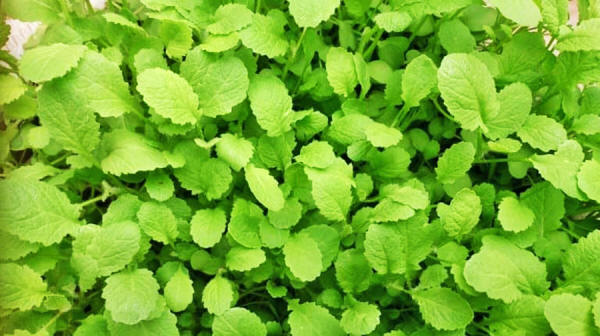
Mustard greens are not only a
delicious and nutritional food item, they are also great for
protecting against electromagnetic radiation!
While you may be used to seeing them grown in outdoor gardens,
mustard greens can be very useful indoors because they can
protect against damage that may be caused by oxidative stress or
radiation.
This means that your air will be cleaner and the amount of
radiation in your home will be greatly reduced.
You may want to start your mustard greens outdoors, but once you
have enough, you can transfer some to an indoor pot.
You'll be amazed at just how quickly it grows! The best way to
care for them is to keep them in a sunny area with partial shade
and to fertilize it several times a year.
They need about 2 inches of water a week, so make sure that you
are staying on top of that as the plant grows.
The mustard greens will grow quickly and may start to overflow
out of the pot. This is okay as they are perfectly edible and
can provide a nice spicy kick to any of your meals.
They are also high in vitamin A, C, and beta-carotene, so the
health benefits extend far beyond just blocking radiation.
10. Rubber
Plant
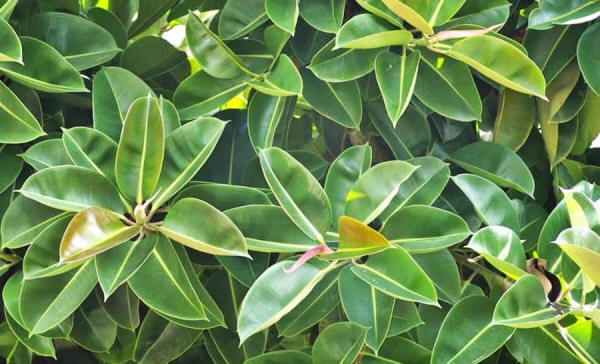
The
rubber plant is large,
aesthetically pleasing plant that has many radio-protective
properties.
It helps to absorb electromagnetic waves wherever it is kept but
will be the most efficient when stored near your electronic
devices.
It can be grown inside or outside and is relatively easy to
maintain considering its beauty and size. In addition to
protecting you from radiation, it has plenty of air-purifying
properties as well.
The rubber plant prefers to be kept in a mild environment with
indirect light and a cooler temperature.
Keep it in an air-conditioned room that gets several hours of
sunlight during the day, especially if you live in a hot
climate.
Windows with curtains can be great, as they will help it receive
just the right amount of light. When it is growing, you will
need to keep it moist, watering it regularly if you notice that
the soil is drying out.
When it is not growing, you may only need to water it once or
twice a month as it won't be using up as many nutrients.
The rubber tree is a beautiful, extravagant plant that looks
fantastic in any style of room.
Placing several
throughout your house will give you a tropical feel while
protecting you from many of the harmful electromagnetic waves
that are constantly being emitted throughout your home.